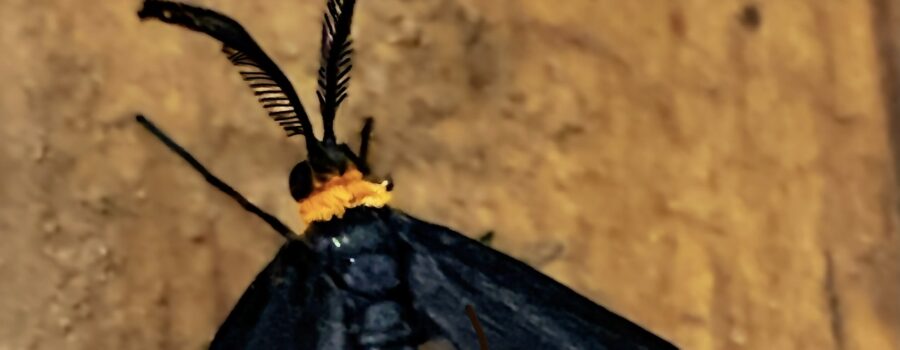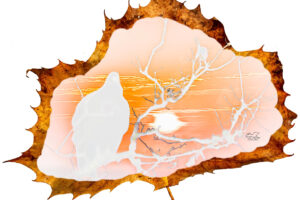Grapeleaf Skeletonizer Moths Have Interesting Habits

One evening when I went out to feed the dogs, I found this really cool looking moth flying around in the dog house. It was a grapeleaf skeletonizer moth (Harrisina americana), which is a fairly common, but kind of odd looking moth, that’s native to eastern North America. I see them fairly regularly around here since we have wild summer grapes draping quite a few of the fences and trees in the area. They’re one of several types of skeletonizers, so called because their caterpillars eat the tender parts of leaves leaving only the tougher veins. Each type of skeletonizer has its own type of preferred plant, and for the grapeleaf skeletonizer it’s members of the grape family (surprise!). Interestingly, though, they are also sometimes found on redbud leaves. When grapeleaf skeletonizer caterpillars first hatch out, they tend to eat in clusters, with the individuals lined up shoulder to shoulder. As they grow, the groups tend to disperse slowly. It’s believed that this is a defensive mechanism. Grapeleaf skeletonizers are the only skeletonizer larvae that feed gregariously like that.

Down here in the south there tend to be two to three generations, while further north, there is usually only one. These moths spend the vast majority of their lives as larvae with adults living only a week or so. While adults, they feed only on flower nectar. They fly both during daylight and at night, but seem to prefer the be out around dawn. Luckily, these moth larvae usually cause very little severe damage to healthy grape vines, wild or cultivated. With their elongated, black bodies and wings and the reddish orange ring around the neck, I have always thought that they look like a somewhat larger lovebug. Both insects have this coloration to warn predators that they have an unpleasant taste. It’s definitely interesting how nature seems to have a language all its own.





Recent Comments